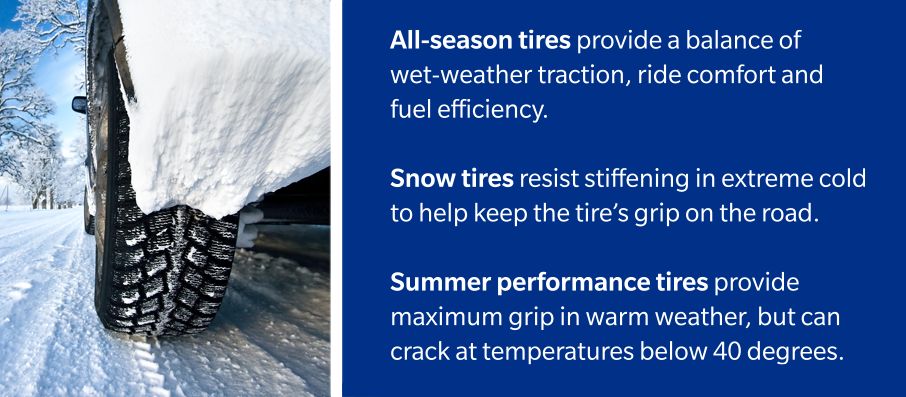
Getting on the road
Do you really need to warm up your car first?
Once upon a time, warming up your car was necessary to get oil circulating in the engine—a critical reaction if you wanted the car to respond when you hit the gas. But today's fuel-injected engines reach full oil pressure within seconds of starting. You can turn the key and go without risking engine damage, and save a little gas by reducing your car's idle time.

Getting your car ready for winter
The right way to clean a winter windshield
Straight water in your washer fluid reservoir can freeze and turn slushy in cold weather, which can damage windows and the washer system. Select a washer fluid with de-icer that stays liquid in the lowest average winter temperature in your area. You can also buy a concentrated washer fluid designed to mix with water, but these concentrates may not contain adequate de-icer/anti-freeze ingredients. Check the fine print on the label to make sure a concentrate is suitable for winter use.
Every month, inspect the wiper blades and replace them if they have ragged, cracked or rough edges, or a bent metal frame. When the wipers are turned on, they may need to be replaced if they leave water streaks, don't come into full contact with the windshield, or make a chattering sound.
Why you should test your battery before it gets cold
Ask your mechanic to test the strength of your car's battery every summer or fall. (A full-strength charge is 12.6 volts.) If the charge is weakened by age or everyday wear, your car may not start on the first cold morning. Low temperatures slow the chemical reactions that create a charge inside the battery, and a weak battery (below 12 volts) can start to freeze around 32 degrees Fahrenheit.
Yes, your car needs clean coolant in winter
An engine always needs coolant to prevent overheating, even on the coldest days. Coolant should be replaced every two to five years depending on the car (check your owner’s manual). Old coolant can lose its antifreezing properties and turn slushy in winter, which can prevent the coolant from circulating through the engine properly. Coolant that appears speckled or muddy may have accumulated bits of corroded metal, dirt or sludge from running through the cooling system for too long and needs to be flushed out and replaced.
Are your tires right for your region?
Most new cars leave the factory with all-season tires, which provide a balance of wet-weather traction, ride comfort and fuel efficiency. Upole recommends all-season tires in areas where the average individual snowfall is less than 6 inches.
Snow tires may be a better choice if snowstorms in your area regularly top 6 inches. The rubber compounds used in snow tires resist stiffening in extreme cold, which can reduce a tire's grip on the road. Snow tires also have deeper treads, which may help prevent snow from building up on the surface.
The rubber compounds used in summer performance tires provide maximum grip in warm weather, but can crack at temperatures below 40 degrees. Summer performance tires should be switched for winter tires and stored at room temperature in winter.

original post: https://www.farmers.com/learn/plan-and-prep/winter-car-care-tips/